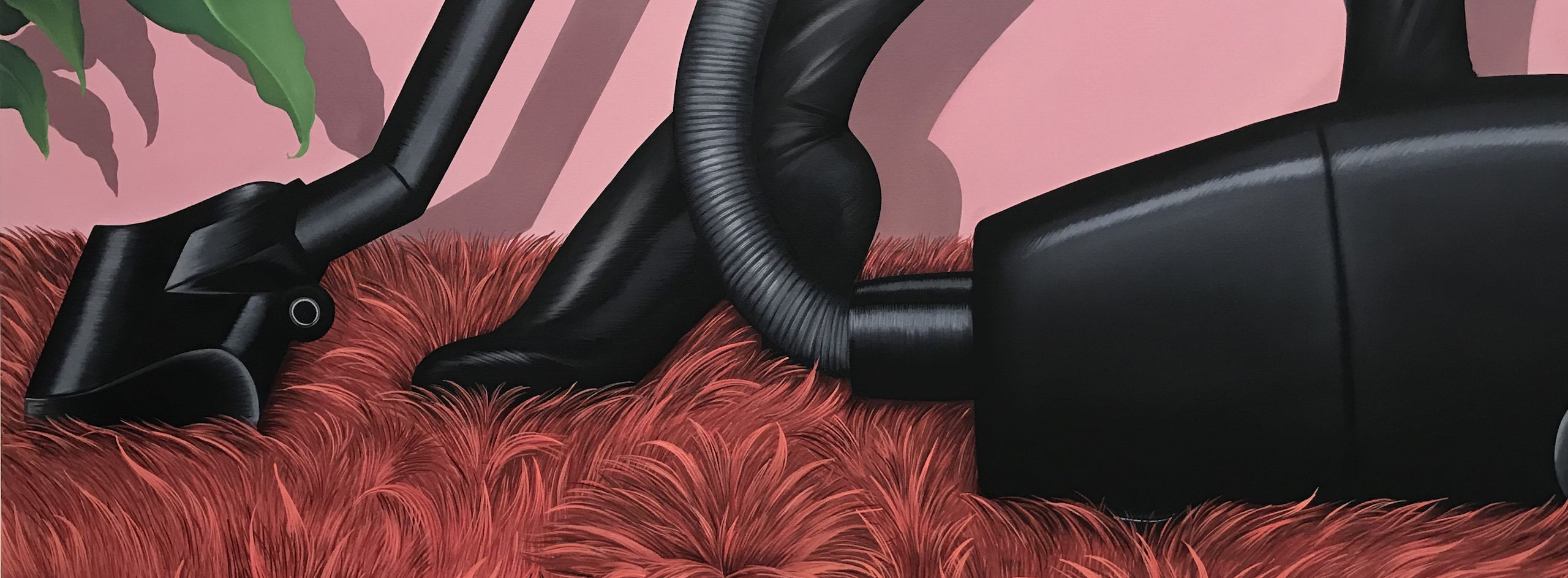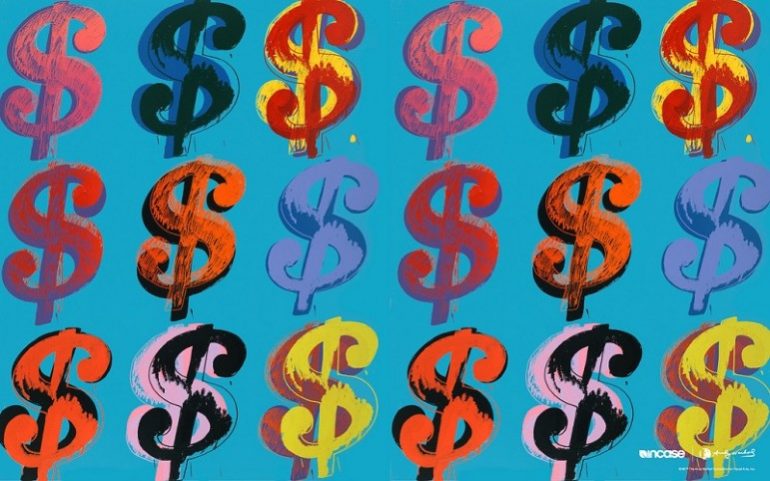For a private individual: Favoured tax system
Absence of property tax:
Exempt from taxation until 2017, art is today simply excluded from the real estate wealth tax bases from the Loi Finance (Financial Law) of 2018
Purchase: VAT rate among the lower in Europe
Acquisition of a work of art from a gallery, an antique dealer or an auction house is subjected to normal rate VAT (20%).
In the case of an acquisition by a French collector from the same professionals located in a country of the European Union (E.U.), VAT must be paid in the seller’s country, according to national rules and the VAT rate applicable in the selling State.
However, there are some derogations in the case of distance selling: the delivery of a good by a seller of a member State to a private individual, not VAT-taxable in France or another member state (VAT application state is either the seller’s or the buyer’s state, depending of the turnover of the seller in this State).
Acquisitions made in France directly from artists or their beneficiaries are subjected to reduced VAT of5.5% (one of the lowest in the E.U.).
As the private buyer is not subjected to VAT, he will not be able to deduce it. Therefore, it is an extra cost that is added to the price of the work of art.
No VAT is due by the buyer if the seller isn’t VAT taxable, if he benefits the exemption provided for in the article 293 B of CGI (French “Code Général des Impôts”) or if he applies the VAT at the margin system.
In terms of international operations, importations of works of arts outside the E.U. are subjected to VAT rate of 5.5%, and exportations are fully exempted.
Contrary to other “places” of the art market like Switzerland, Singapore or Monte Carlo, France doesn’t have – except bonded warehouse – free port allowing to import and export franchise free works of art. Nonetheless, the French fiscal system is attractive.
Sale: Flat-rate taxation of 6.5%
Article 150 IV of CGI
In case of sale of works of art to a private individual, a flat-rate tax of 6.5% (of which 0.5% under CRDS) applies automatically on the sale price, even in the absence of purchase invoice. The flat-rate tax is particularly beneficial in case of short-term possession of the work of art and significant capital gain.
It is nonetheless possible to choose the ordinary law taxation regime of capital gain on movable property under provision of justification of the date and price of acquisition of the good or justification that the good is possessed for more than 22 years. In this case, the flat-rate tax is not payable.
The option for the ordinary law regime is not revocable.
It is in the seller’s interest to choose this option in case of auction of objects received by succession for 2 years or more; the capital gain being void insofar as the price of adjudication is the retained price as purchase value for the inheritance rights.
The capital gains realized by private individuals on the occasion of transfer of movable assets, under the management of the private estate are in principle subject to income tax to the rate of 19%. Social contributions of 15.5% must be added for a total of 34.5%.
The capital losses realized if need be are of course not taxable but cannot be charged on the capital gain realized the same year and the following years.
The capital gain is the difference between the selling price and the purchase price. The purchase costs and restoration and rehabilitation costs that increase the purchase cost always have to be taken into account for their real amount.
The amount of capital gain is then decreased by an allowance whose rate is fixed to 5% by year of possession beyond the second year, hence the total exemption of capital gain after 22 years of possession. The allowance is applied in the same way for the income tax and the social contributions of 15.5%.
If, after allowance, there remains capital gain, it is hence taxable to the rate of 34,5%.
For the allowance application, the selling owner has to be able to bring a justification of the time of possession of the good; otherwise he will be taxed to the flat rate of 6.5%.
* The costs engaged for the conservation of the work of art can be deduced from the capital gain.
Are excluded from the scope of application the tax the sale or exportation of objects of art, of collection or antiques whose price of sale (or custom value) for each sale or exportation does not exceed 5 000€. In practice, this threshold should be considered object by object, except when the objects sold or exported form a hole, hence, any sale whose price does not exceed 5 000€ is not taxable.
Are exempted from the tax people who do not have their fiscal residence in France when they sell or export the objects or precious metals. Nevertheless, the exporter must justify a former importation, a former introduction or an acquisition in France.
Are also exempted:
- Sales to museums, public libraries and public archives services;
- Exportation under condition of return in France (temporary exportations);
- Sale or exportation by artists of their own creations when they have the continuous property of it since its creation.
Anticipation of the estate plan
The transmission of a work of art by donation or by succession is taxable to inheritance tax like any other asset.
It is advised to anticipate any transmission of works of art in France, by using, for example, the mechanism of donation-sharing (donation-partage) which allow to determine the value of the work at the moment of the donation which cannot be question during the succession. The inheritors can pay their inheritance rights by transferring a work to the State. The gift in payment is suspensive of the payment of the rights and do not generate interests on late payment, whatever the final decision of the State.
Right to follow
It is a remuneration of artists and their beneficiaries on the sale of works of arts covered by an EU directive of 2001.
The French legislator go further as he allows this right to foreign authors (as well as their legal inheritors) who, throughout their artistic career, participated to the life of French art and had, at least for 5 years – even nonconsecutive- their residence in France and asked for it.
The right to follow lasts the entire life of the author and live on 70 years after his death, inalienable, it cannot be sold or given. The author cannot renounce it, even contractually.
At the author’s death, the right to follow is vested in his beneficiaries, whatever their nationality.
But the notion of beneficiary is not defined nor harmonized at Community level.
The French legislator choose to vest the right to follow, after the death of the author, only in his legal beneficiaries, to the exclusion of every legatees and successors (article L123-7 of CPI). The Spanish legislator on the contrary agrees only the artist foundations. Hence the importance to determine which right is important.
It must be a single original work of art or exist in limited quantities executed by the artist himself or under his responsibility (under these conditions they must be numbered or signed).
The right to follow is applied to every act of resale in which professionals of the art market intervene as sellers, buyers, or intermediaries, such as auction halls, art galleries (including internet ones) and, in general, any art dealer.
In France, at least one of the two following conditions must be fulfilled:
- The sale of the work is made on the French territory;
- The sale is subjected to VAT in France
The right to follow is not owed if the price of resale of the work is bellow 750€.
By derogation, the right to follow does not apply in France when the professional seller purchased the work directly from the author less than three years before the sale and that the selling price does not exceed 10 000€.
The selling price used as the base for the collection of the right to follow corresponds by work, before tax, to the adjudication or transfer price perceived by the seller.
When applied, the right to follow is calculated according to the following scale:
- 4% for the 1st tax bracket of 50 000€ of the sales price
- 3% for the tax bracket of the sales price comprised between 50 000.01 and 200 000€
- 1% for the tax bracket of the sales price comprised between 200 000.01 and 350 000€
- 0,5% for the tax bracket of the sales price comprised between 350 000.01 and 500 000€
- 0,25% for the tax bracket of the sales price exceeding 500 000€
Either way, the global amount eligible during the sale of a work cannot exceed 12 500€.
The payment of the right to follow is at the expense of the seller.
For companies:
Deduction:
The purchase of contemporary work of art is deductible from the taxable result.
In the case of art patronage, you can deduce from the result of the current financial year your acquisitions of contemporary works of art up to 5% of your annual revenues*, and this by equal amounts for 5 years.
An equivalent sum to the operated deduction must be reported to a special reserve account to the liabilities of the balance sheet of the company. In case of transfer of the work, or debit from the reserve account, the related sum must be reintegrated to the taxable result of the concerned financial year.
*revenue reduced by the total of deductions mentioned by article 238 AA of CGI
Deductibility:
Deductibility of purchase of contemporary art from the taxable result benefits to every companies and liberal professions subjected to the corporate tax, or to BIC (Industrial and commercial benefits), BNC (Noncommercial benefits), and BA (Agricultural benefits). It is not subjected to any prior authorization from the administration. The company who decide to practice this deduction must join to its declaration of results a compliant document to the model presented by the administration.
Conditions of exposition:
The works concerned by the tax deduction must be exposed in the business premises, in a place accessible to the public, at least during the amortization period of the good. Nevertheless, for the works whose purchase price is below 5000€ before taxes, the condition of exposition to the public is satisfied as long as the work is exposed in a place “accessible to the customers or employees of the company, except for private offices”.
Finally, a VAT of 10% is applied to transfer of property rights of artists and for delivery of works of arts realized by subjected companies who used it for the needs of their operations, especially at galleries. Furthermore, no custom right is applied.


